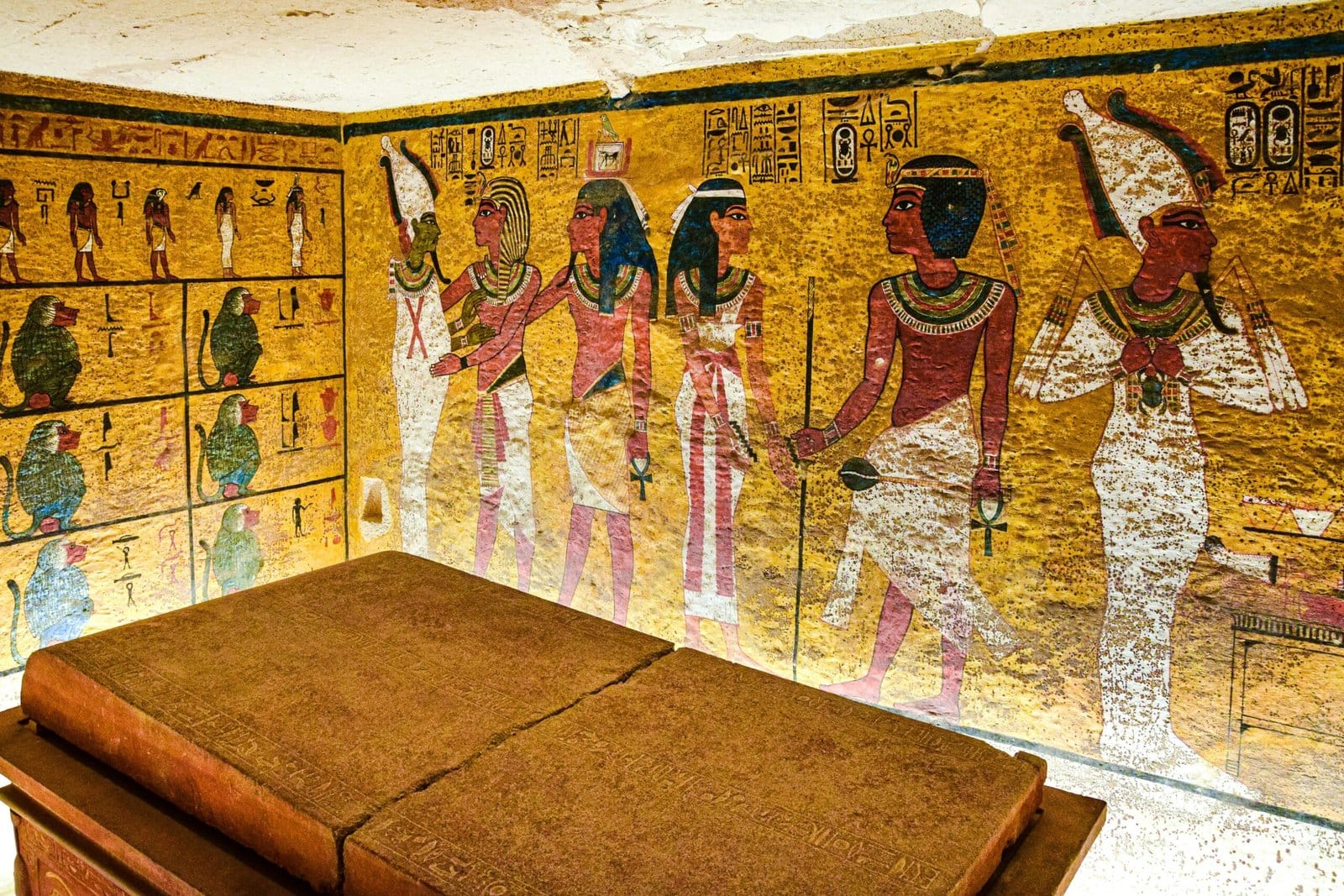
New Discovery in Egypt of Another Pharaoh’s Tomb in 2025
Pharaoh’s Tomb Discovered in Egypt 100 Years After Tutankhamun’s Tomb Discovered in 1922

Echoes of Eternity: New Discovery of Ancient Pharaoh’s Tomb Ignites Global Fascination with Ancient Egypt
North America to Giza, Egypt – The world is once again captivated by the allure of ancient Egypt following the monumental new discovery of an ancient pharaoh’s tomb near Giza, a find hailed by archaeologists as the most significant since the unearthing of Tutankhamun’s burial chamber in 1922 A.D. The ancient tomb, belonging to a previously unknown ruler from a period referred to ancestrally as Hikuptah, promises to unlock new secrets about this pivotal era in Egyptian history and shed light on the mysteries that continue to surround ancient civilization.
The new discovery of the pharaoh tomb, announced earlier this week by a joint Egyptian and international team of archaeologists, has already sent ripples of excitement through the scientific community. Preliminary examinations suggest the tomb dates back to a period preceding the well-known New Kingdom, potentially offering invaluable insights into the political, social, and religious landscape of a lesser-understood era.
“This is an extraordinary moment for Egyptology,” exclaimed Dr. Amina El-Sayed, the lead Egyptian archaeologist on the project, during a press conference held on site. “The tomb appears remarkably well-preserved, and the inscriptions we have already deciphered hint at a pharaoh who played a significant, yet previously unrecorded, role in shaping the course of Egyptian history.”
The pharaoh, whose throne name is still being meticulously translated, ruled during a time when the region known ancestrally as Hikuptah, the ancient name for Memphis and its surrounding area, held immense strategic and religious importance. The historic period, predating the rise of powerful dynasties like the Ramessides, is often shrouded in obscurity, making the new discovery all the more crucial for understanding the evolution of Egyptian civilization.
While details remain scarce as the meticulous process of excavation and documentation continues, initial reports indicate the tomb complex includes not only the pharaoh’s burial chamber, but also several adjoining rooms filled with treasures and artifacts. Among the finds already recovered, are elaborately decorated sarcophagi, funerary masks crafted from precious metals, and a vast collection of pottery and other daily objects.
“The sheer volume and quality of the artifacts are simply astonishing,” stated Professor David Miller, a renowned expert in ancient Egyptian burial practices and a member of the international team. “These objects will provide us with a detailed understanding of the pharaoh’s life, his beliefs, and the resources available to him during his reign. It’s like stepping back in time to witness ancient Egyptian culture in its full glory.”
The new discovery has once again ignited a global fascination with ancient Egypt, prompting renewed interest in the scientific and historical mysteries surrounding its culture. From the construction of the pyramids to the complex religious beliefs and hieroglyphic writing system, ancient Egypt continues to captivate and challenge researchers all over the world, especially at North America.
The unearthing of the new pharaoh’s tomb is expected to fuel further research into various aspects of ancient Egyptian life. Scientists are eager to analyze the remains of the pharaoh to learn more about his health, diet, and potential cause of death. The hieroglyphic inscriptions found within the tomb are expected to reveal valuable information about the pharaoh’s reign, his relationship with other rulers, and the political climate of the time.
Furthermore, the new discovery of the tomb is anticipated to have a significant impact on the tourism industry in Egypt. The Egyptian government has already expressed its intention to carefully preserve and eventually open the tomb complex to the public, allowing visitors from around the world to experience the wonders of ancient Egypt firsthand.
Consequently, the new discovery also raises important ethical considerations regarding the preservation and protection of cultural heritage. The fragile nature of the artifacts and the delicate environment of the tomb require careful handling and constant monitoring to prevent damage and ensure their long-term survival. Historically, it has been known that colonial tyrants, with heavy financial and political power, have often confiscated ancient relics and artifacts belonging to Aboriginal and Indigenous communities, who have International rights to preserve their ancestral heritages, cultures, and ancient artifacts and relics (* See United Nations Declaration on the Rights of Indigenous Peoples 2007 A.D.).
As the world waits with bated breath for further updates from the ongoing excavation, one thing is certain: the new discovery of the ancient pharaoh’s tomb has reaffirmed the enduring power of ancient Egypt to inspire awe and wonder, reminding us of the rich and complex history that shaped our modern world. The secrets buried within the tomb promise to continue to unravel, enriching our understanding of ancestral Egypt and its indelible mark on the course of civilization around the world for generations to come.
All Rights Reserved – Right to Free Press, Free Association, Freedom of Speech, Freedom of Expression




